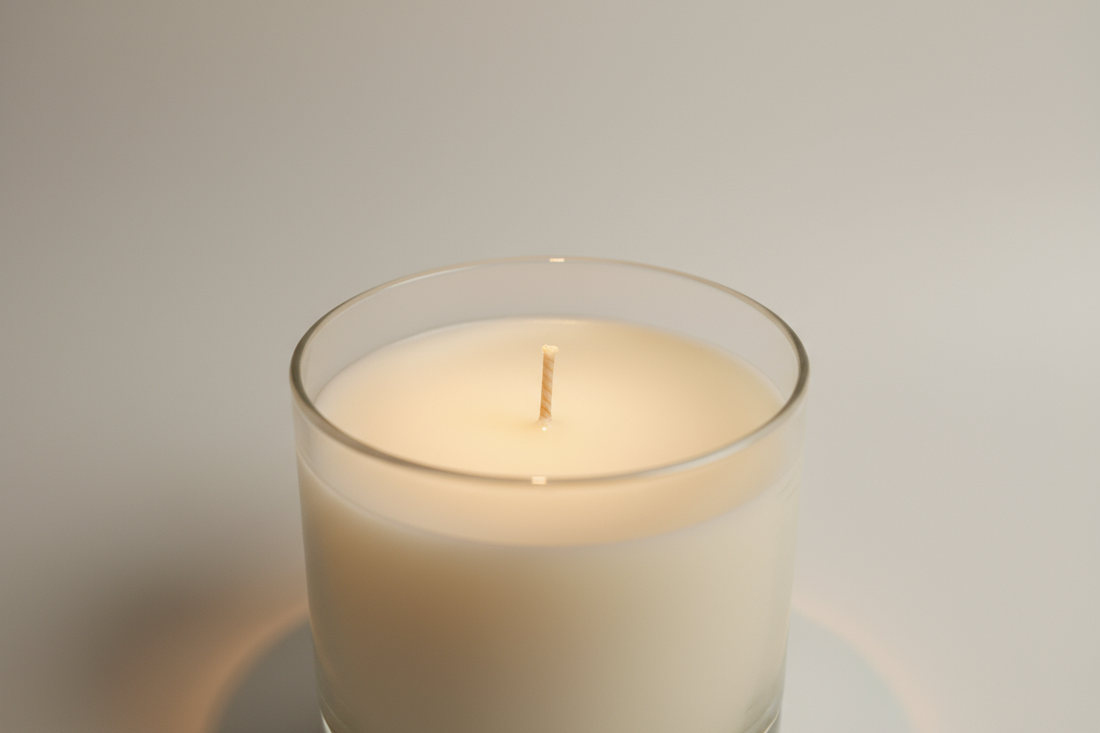
Common Soy Candle Mistakes (and How to Fix Them)
Share
Soy wax is a beautiful material — smooth, natural, and delightfully forgiving — but even the most seasoned candle maker will tell you it has a personality of its own. Sometimes it frosts. Sometimes it tunnels. Sometimes your perfectly chosen fragrance seems to have packed up and left the moment you light the wick. Don’t despair. Most issues can be solved (or at least greatly improved) once you understand the why behind the wax.
1. Frosting: The Snowy Surprise
You pour your candles, and they look like fresh cream. A few hours later, they’ve developed a cloudy, crystalline film. This is frosting, a natural quirk of soy wax caused by the way the wax molecules realign as they cool.
How to fix it:
Try pouring your candles when the wax has cooled slightly (around 49–57°C). Avoid sudden temperature shifts — keep your workspace warm and consistent, and don’t pop candles straight into a chilly room. A slower, gentler cooling process helps prevent the wax from forming those frosty crystals. Even with care, a little frosting is normal — it’s the hallmark of a genuine soy candle, not a flaw.
2. Tunneling: The Hollow Burn
You light your new candle, and instead of melting evenly, it burns a neat little hole straight down the center — leaving a thick ring of wasted wax. That’s tunneling.
How to fix it:
On the first burn, always let the candle melt all the way to the edges of the container — this “memory burn” trains the wax to melt evenly on future uses. If tunneling has already started, wrap aluminum foil around the candle’s top edge, leaving an opening above the flame. The foil reflects heat inward, encouraging the outer wax to melt and even out the surface again.
3. Poor Scent Throw: When Your Candle Has Stage Fright
A soy candle can smell incredible in the jar but mysteriously weak when lit. This problem usually comes down to fragrance load, temperature, or curing time.
How to fix it:
Add fragrance oil at the correct temperature (typically between 79–85°C) — too hot, and the scent burns off; too cold, and it won’t bind properly to the wax. Then, let your candles cure for at least one to two weeks before lighting. The curing process gives the fragrance time to bind with the wax molecules and reach its full aromatic potential.
4. Wet Spots: The Patchy Look
You notice strange translucent patches clinging to the sides of your glass jars. Those are air pockets where the wax pulled away as it cooled.
How to fix it:
Warm your jars slightly before pouring — just enough to remove the chill. Pouring warm wax into cold glass almost always creates wet spots. You can also tap the jar gently right after pouring to help release trapped air bubbles.
5. Sinkholes and Cracks: The Uneven Surface Problem
As your candle cools, it develops a little crater around the wick or a hairline crack across the top. These happen because soy wax contracts as it solidifies, especially when poured too hot or cooled too quickly.
How to fix it:
Pour in layers if necessary — fill most of the jar, let it set slightly, then top it off to smooth the surface. Keep the candles in a draft-free space while cooling. A quick touch-up pour (reheating a small amount of wax to fill the dip) usually makes the top perfectly smooth again.
6. Mushrooming Wicks: The Smoky Aftereffect
If your candle’s wick develops a black “mushroom” cap or produces smoke, it’s burning too hot or the wick is too large for the jar size.
How to fix it:
Trim the wick to about ¼ inch before each burn, and test different wick types or sizes when making new batches. Each soy wax blend behaves differently, so wick testing is as essential as scent testing.
The Art of Patience and Precision
Making perfect soy candles is a little like baking: temperature, timing, and environment all matter. The key is observation. Keep notes on your pour temps, fragrance ratios, and room conditions — each adjustment teaches you more about how your specific wax behaves.
A flawless soy candle doesn’t happen by accident. It’s the result of small, deliberate choices — and the quiet joy of turning chemistry into comfort.






